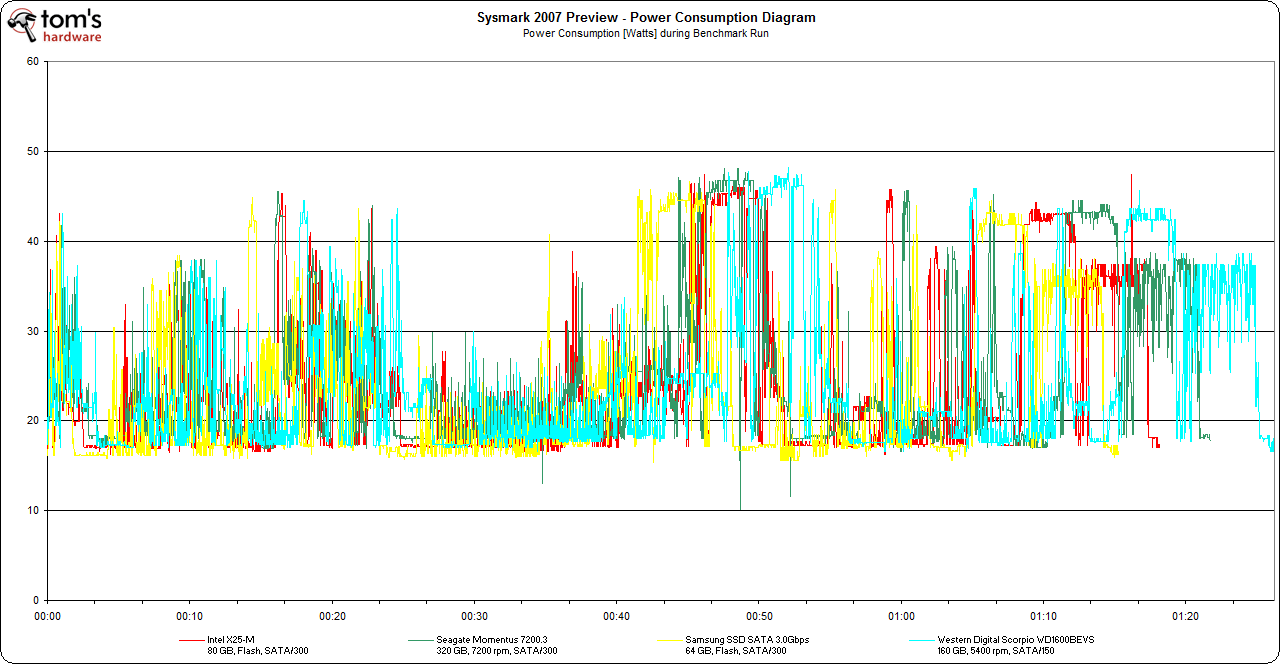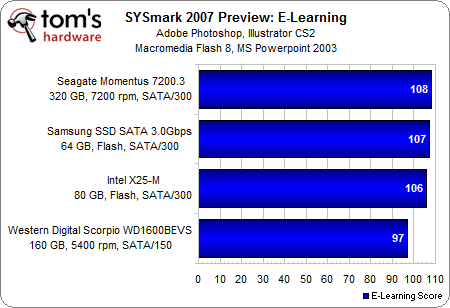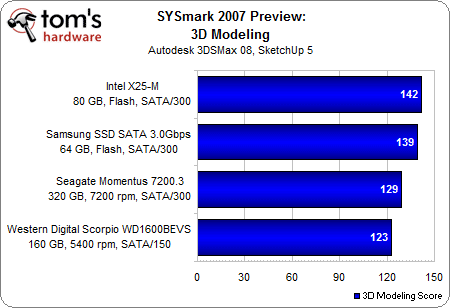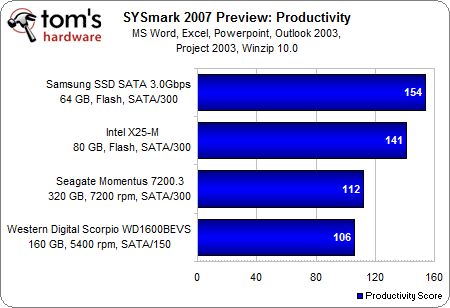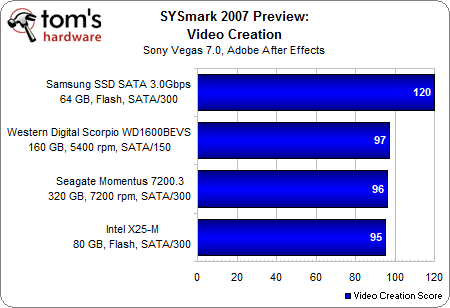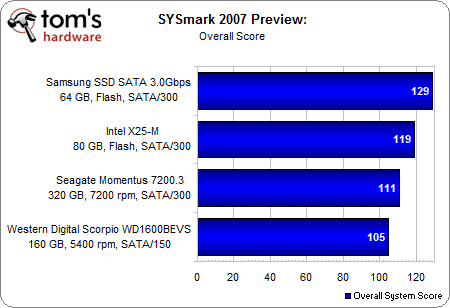Intel's X25-M Solid State Drive Reviewed
SYSmark 2007 Performance and Power Consumption
This is probably one of the most important tests, as real life applications and power efficiency come into the equation. Unlike the low-level benchmarks, we ran SYSmark 2007 Preview (as well as Mobilemark 2007, as we’ll see later) on a Dell Latitude D630 provided by Samsung. This model utilizes a 2.5 GHz Core 2 Duo T9300.
The diagram shows the power consumption of the Dell Latitude D630 at every point during the entire SYSmark 2007 Preview run, which executes four different suites : E-learning, productivity/office, video creation and 3D modeling. All of them are based on real applications and representative workloads, which also tax the system drive.
You can see that the system using Samsung’s 64 GB SATA-2 SLC shows the lowest system idle power (yellow line), while the system equipped with the Western Digital Scorpio or Seagate’s Momentus 7200.3 both show more idle power. When the systems are active (high power requirements), the differences between the drives aren’t very visible, as the total system power consumption increases more and makes the drive power consumption less relevant.
However, you can clearly see that the system with the WD Scorpio drive takes the longest time to complete the benchmark, followed by the Seagate Momentus 7200.3, the Intel X25-M and, in first place, the Samsung 64 GB SSD SATA-2. Despite Intel’s high throughput and I/O performance, the SLC-based Samsung drive manages to deliver even higher performance and consumes less total system idle power.
The flash-based drives don’t have much of an impact on the e-learning section of SYSmark 2007 Preview. However, the 5,400 RPM drive is clearly slower.
For 3D modeling, Intel’s X25-M is the best choice, but the Samsung SSD with SLC flash memory is close behind.
The performance differences among the hard drives are small, but once you switch to one of the flash SSDs, you get a 20-40% boost for office applications, as they start and terminate quicker and the system responds faster as well.
Get Tom's Hardware's best news and in-depth reviews, straight to your inbox.
Video creation doesn’t show much of a difference between the hard drives and the new Intel X25-M. However, the Samsung SSD shows some nice advantages.
This is the order in which the test system completed the runs.
The SYSmark 2007 Preview tests were performed on a Dell Latitude D630 system. Please refer to the test setup page for details.
Current page: SYSmark 2007 Performance and Power Consumption
Prev Page PCMark Application Performance Next Page Performance per Watt: Workstation I/O